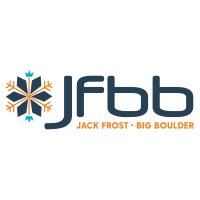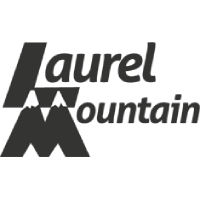Skiing and Snowboarding: An Exhilarating Adventure
Skiing and snowboarding offer an exciting escape from daily routines. Each time you hit the slopes, there are new challenges to overcome and personal accomplishments to celebrate. The mountain environment provides a breathtaking backdrop, leaving you feeling healthy, happy, and alive.
These winter sports offer a very personal experience - you can adapt your style to match your mood and the conditions of the mountain. Beginners can enjoy the same thrills and rewards as advanced skiers and riders. And no two runs are exactly the same due to the infinite variables of terrain, weather, snow, and your own progression.
Skiing and snowboarding are also a great way to make new friends and strengthen bonds with family and loved ones. They allow for freedom, creativity, and independence - continually challenging the human spirit. Continue reading for topics such as:
- Preparing for your first visit
- Managing expectations
- What to wear
- Essentials
- What to expect in the rental shop
- Lessons


Why do So Many People Love Skiing and Snowboarding?
- Skiing and snowboarding is fun -- an exciting change from daily routines and pressures.
- Each time you ski or snowboard there's a new challenge to meet and a new accomplishment to take pride in.
- Skiing and snowboarding puts you in a mountain environment of astonishing beauty. You feel healthy, happy and alive.
- Alpine skiing and snowboarding is a very personal experience. You can change the way you ski or ride to match your feelings and the mood of the mountain.
- It turns winter into an enjoyable time of the year.
- A beginner can enjoy skiing or snowboarding right from the start, experiencing the same challenges and rewards as the accomplished skier or snowboarder.
- No two runs are the same because of the infinite variables of mountain terrain, weather, snow conditions and your own feelings.
- It's a great way to meet new friends and for family and friends to grow closer together.
- Alpine skiing and snowboarding is an expression of freedom, creativity and independence.
- It continually challenges the human spirit.
Preparing for Your First Visit
Don't worry if you're new to the slopes - Pennsylvania ski areas cater specifically to first-time skiers and riders. Review the resort information and trail maps on our website to get familiar with the layout and amenities before your visit.
Manage Your Expectations
Everyone learns at different paces. Keep your expectations reasonable, focusing on the fun and excitement of the overall experience rather than rapid skill development. Factors like age, temperament, and physical ability can all impact the learning curve for skiing and snowboarding.
What to Wear


Don't Forget the Essentials
When You Arrive at the Resort
Still Want to Know More?
Continue reading for more clothing tips for skiing and riding and specific information about visiting the rental shop
Clothing tips for skiing and riding
- The wicking layer should fit snugly (not tight) next to the skin in order to effectively wick moisture. Comfort is key for the insulating layer. It should be loose enough to trap air between layers, but not so bulky that it restricts movement. Whether you are a skier or snowboarder, your protection layer should fit comfortably, offering you maximum range of motion.
- Look for 100 percent UV protection in sunglasses. Make sure the glasses fit snugly behind your ears and rest gently on the bridge of your nose.
- Goggles should form an uninterrupted seal on your face, extending above your eyebrows and below your cheekbones. Watch for gaps, especially around your nose.
- Don't buy gloves or mittens that are too tight. There should be a little air space at the tips of your fingers, which acts as additional insulation.
- Don't wear jeans or street pants. Denim is not waterproof, so water will soak through and you'll end up cold, wet and miserable.
- Cotton is a no-no. Cotton is great for towels, because cotton soaks up and retains moisture. That's precisely why cotton is all wrong for on-slope apparel. It absorbs moisture (sweat and snow), and retains it. When the wind blows, you will get very, very cold. Don't wear cotton athletic socks, cotton jeans, cotton sweatshirts, or cotton T-shirts.
- Resist the temptation of putting on more than one pair of socks. You'll restrict circulation and actually cause your feet to get colder.
Your First Time in the Rental Shop
In the rental shop you’ll provide your street shoe size, height and weight. This is what enables the rental shop technician to provide proper equipment for you. They will provide you the appropriate size of ski or snowboard boots, and skis or snowboards for you. This equipment is provided to you based on your level of experience.


What About Lessons?
When just starting out, lessons are always a good idea. All resorts offer both adult and kids lessons. Group lessons are for multiple people of the same ability level. Private lessons are also available to provide for one on one teaching.
We look forward to hosting you at one of our Pennsylvania member resorts.




















